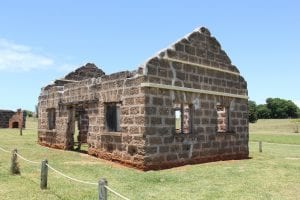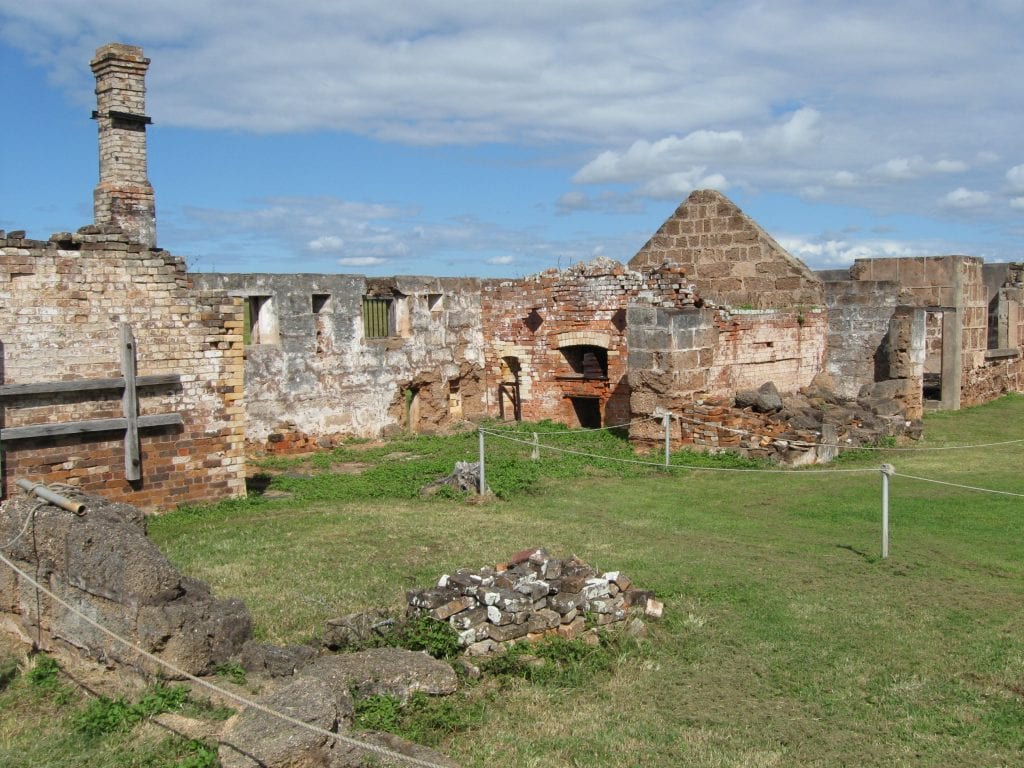Ecotourism, National Parks
St Helena Island National Park
History
First Nations people visited St Helena Island thousands of years prior to European habitation. They were attracted to the Island each year during the warmer months, when large colonies of fruit bats congregated. During the winter they hunted dugong in the surrounding waters. Huge middens of bone and shell, one being the oldest man-made relic on the Island, are evidence of their long-term use of the area. St Helena was originally described as one of the Green Islands by Matthew Flinders, in 1799. It was named St Helena in 1828, when an Indigenous man named Napoleon was exiled there from Dunwich penal settlement on North Stradbroke Island, after stealing an axe. Unlike his namesake, he later escaped in a self-made canoe.

During the mid-19th century, the Island was used as a base for dugong fishing. In 1866 it was selected as the site for a quarantine station, and prison labour was used for construction. However, the isolation of the Island lent itself to the establishment of Queensland’s most notorious penal colony in 1867. The harsh treatment dished out to inmates gained it a reputation as the ‘Hell Hole of the South Pacific’.
The prison settlement quickly became self-sufficient, and was soon heralded as one of the finest examples of self-sufficiency and profitability in the world. The first buildings were constructed of bricks and timber brought from the mainland. Timber growing in the Island’s rainforests was considered unsuitable and was only used to construct fences. It wasn’t long before the colony boasted two cell blocks, a hospital, lime kiln, boathouse, kitchen, Superintendent’s cottage, bakehouse and housed carpentry, blacksmithing, tinsmithing, boot and shoe making, saddle making, candle making, tailoring, book binding and sail making industries. Queensland’s first tramway system was established on the Island. The surviving beach rock walls and causeway are recognized as notable engineering feats.
The original rainforest was cleared for pastures and crops. Introduced plants soon began to grow around the supervisor’s cottages. The prison Superintendent encouraged visiting ship’s captains to bring native trees from their homelands and many of these were planted around the Island. Olive groves produced fruit that won prizes for their oil quality in Italy, and Ayrshire dairy cattle raised on the Island were common amongst award winners at Brisbane RNA shows.
During 1891, Queensland shearers went on strike for better working conditions. Many of the ringleaders were subsequently charged, convicted and gaoled on St Helena Island. Shark feeding was actively encouraged to deter prisoners with thoughts of escaping by swimming to the mainland.
Changing attitudes to prison reform lead to the gaol being changed to prison farm status in 1921. It remained a prison farm until its closure in 1932.
Ownership was handed to the Lands Department in 1939 and areas were subsequently leased to graziers prior to the 75.1ha Island being declared Queensland’s first Historic Site National Park in 1979. With limited funds, park rangers maintain the ruins, carry out some restoration work and do other ongoing maintenance, as well as conducting guided tours on the Island. School excursions to St Helena are encouraged to teach children about early prison history.
Features
This small tadpole-shaped Island is surrounded by a relic coral reef. Basalt escarpments rise from the south-west corner and form steep ridges on the southern, northern and western sides of the Island. A thin band of forest and mangroves lining the eastern shore are all that is left of St Helena’s original vegetation.
The fresh water on St Helena originally fell as rain on the Darling Downs, near Toowoomba. This water drains into the Great Artesian Basin, the largest artesian basin in the world, and flows underground across Moreton Bay to St Helena.
The ruins on St Helena are reminiscent of those found at Port Arthur and on Norfolk Island, yet they are easily visited on a day trip from Brisbane. The remaining relics are all built of beach rock (cay sandstone) quarried on the Island by prisoners. The surface beach rock initially used proved much too soft for building materials. Harder rock was found following further excavation. The Rangers have positioned a large beach rock ‘block’ near the site of the old quarry for visitors to touch and feel how easily it erodes.
Large numbers of native birds including rainbow bee-eaters, honeyeaters, plovers, kingfishers and quails inhabit the Island, along with many migratory waders.
Access
St Helena is located in Moreton Bay, 8km from the mouth of the Brisbane River, about 7km north-east of Manly. Tourist launches leave from Brisbane and Manly. Private boats can be anchored in the area adjacent to the causeway
To preserve the fragile ruins, access to the restricted sections of the Island is only permitted with an accredited tour guide, or National Park Ranger. Rangers conduct some guided tours – check for current details prior to your visit. Fees are levied for tours.
St Helena Ruins Walk
The guided walk takes in all the major historical sites on the Island, but the route varies, depending upon the number of groups on the Island at the time.
As you walk from the boat along the jetty, you pass the old jetty ruins, and one of the first things you notice is the remains of the swimming enclosure. The iron posts were designed to provide protection from sharks. Then, walk past numerous old water wells to the start of the main ruins. From here, your guide will explain history and construction of the remains of various buildings including the administration block, the blacksmith’s shop, the prison cells, solitary confinement cells, kitchens, the Superintendent’s garden and the dairy.
The Deputy Superintendent’s House has been restored and converted to a museum, housing many interesting relics relating to the prison era. The tour then leads back down to the southern end of the Island to the silos and the sugar mill, past the prisoners’ and warden’s cemetery and the lime kiln, before ending at the old quarry and Aboriginal midden.
While waiting for your boat to leave for the mainland enjoy strolling or lazing around the cleared, grassy flats of the unrestricted zone that extends from the quarry and old tramway up to the southern boundary of the first grazing paddock.
The author has endeavoured to ensure that the information presented here is as accurate as possible. However, they or NPAQ do not accept responsibility for any loss, injury or inconvenience sustained by any person guided by this article.


